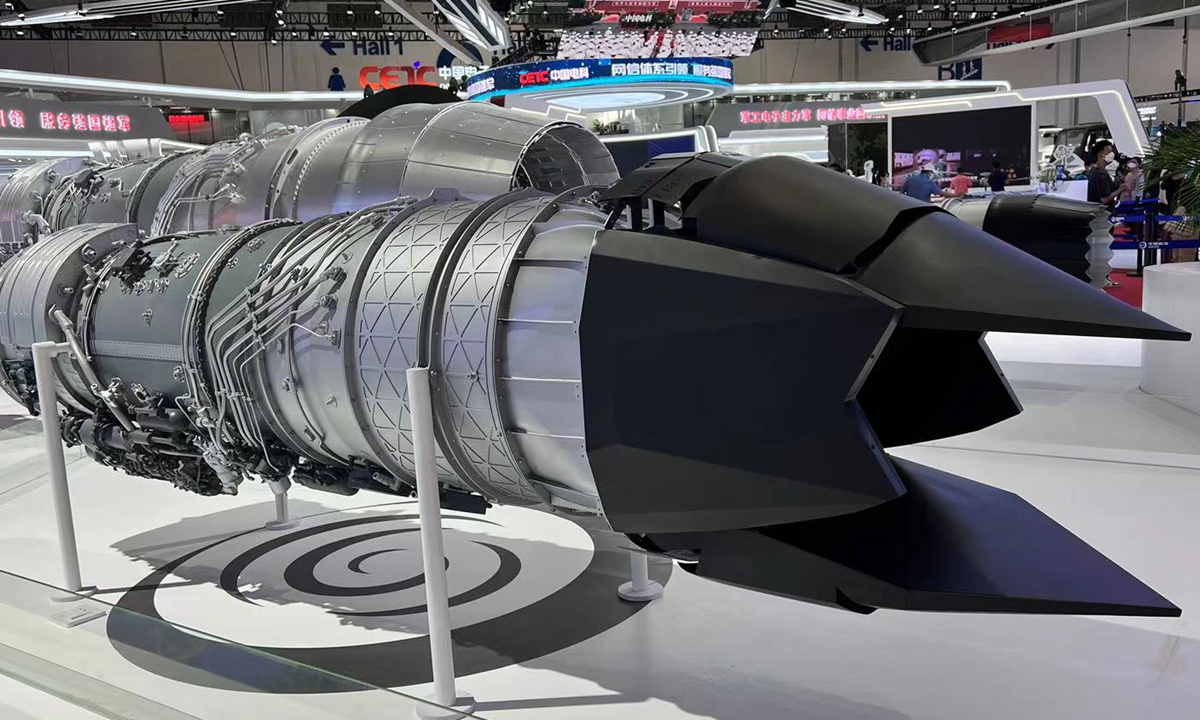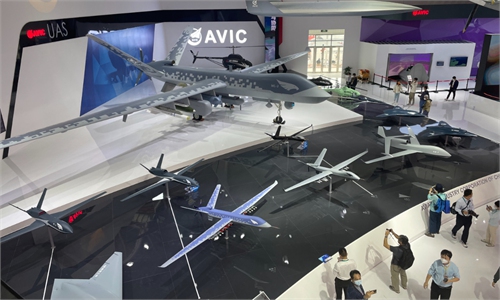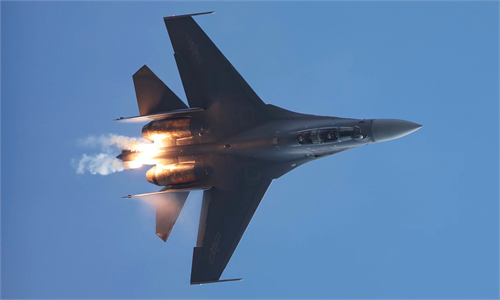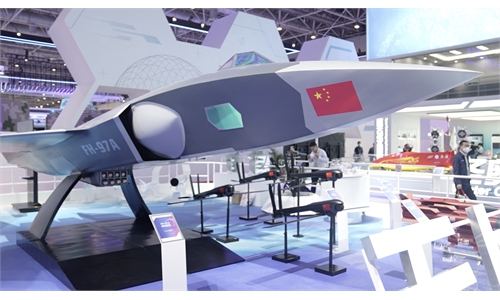
A Taihang engine with a 2D thrust vectoring nozzle is on display at the Airshow China 2022 held in Zhuhai, South China's Guangdong Province from November 8 to 13, 2022. Photo: Cao Siqi/GT
China for the first time exhibited a turbofan engine with a 2D thrust vectoring control nozzle at the ongoing Airshow China 2022 held in Zhuhai, South China's Guangdong Province, with experts saying on Thursday that such an engine could provide aircraft, particularly fighter jets, with enhanced maneuverability and stealth capability, and it reflects the rapid development of China's aero engine sector overall.
Five variants of the Taihang series turbofan engines are on display at the air show, and the Global Times learned from the state-owned Aero Engine Corp of China (AECC) that the Taihang engine has kept receiving improvements and upgrades, and its performance, reliability, safety, stealth capability, power extraction, environmental adaptability, endurance and thrust vectoring -- among other factors -- have all received technical boosts. This is expected to comprehensively enhance the aircraft's survivability and combat capabilities, and it has realized the complete independent support of domestically developed engines.
The five Taihang engines are used on different aircraft, according to AECC.
One of the five Taihang engines on display has a 2D thrust vectoring control nozzle, which attracted attention from visitors.
Thrust vectoring control can greatly enhance the maneuverability of an aircraft, usually a fighter jet, by providing thrust directly to a desired direction in addition to using aerodynamics, and this will give the aircraft many tactical advantages in combat, Wei Dongxu, a Chinese military expert, told the Global Times at the Airshow China site.
An aero engine with a thrust vectoring control nozzle is mechanically and structurally more complex than an engine without one, and this means that thrust vectoring control usually causes a certain level of thrust loss. A 2D nozzle could lose even more thrust than a 3D nozzle. China's development of a turbofan engine with a 2D thrust vectoring control nozzle means the engine has sufficient power that it can manage the loss of some thrust, Wei said.
A 2D nozzle usually has better radar and infrared stealth capability than a 3D nozzle, and that makes the 2D nozzle a generally better option, if the engine itself can provide enough power, Fu Qianshao, a Chinese military aviation expert, told the Global Times.
Li Gang, the pilot of the J-20 stealth fighter jet's first flight, said in a media interview in 2021 that he would like to see the J-20 be upgraded with engines with 2D thrust vectoring nozzles.
At Airshow China 2018, a J-10B thrust vector control demonstrator equipped with an engine with 3D thrust vectoring control nozzle delivered a flight performance. An engine with a 3D thrust vectoring control nozzle was also on display this year as one of the five Taihang variants.
AECC also displayed for the first time the AEF1300, a turbofan engine with high thrust, high bypass ratio and low fuel consumption. It is expected to meet the demands of China's large aircraft.
As drones are coming to play some main roles in modern warfare, AECC also put a type of low-cost turbojet engine on display. As future warfare may require high-speed swarm drones and target drones, this engine's production cost is lower than 100,000 yuan ($13,800).





